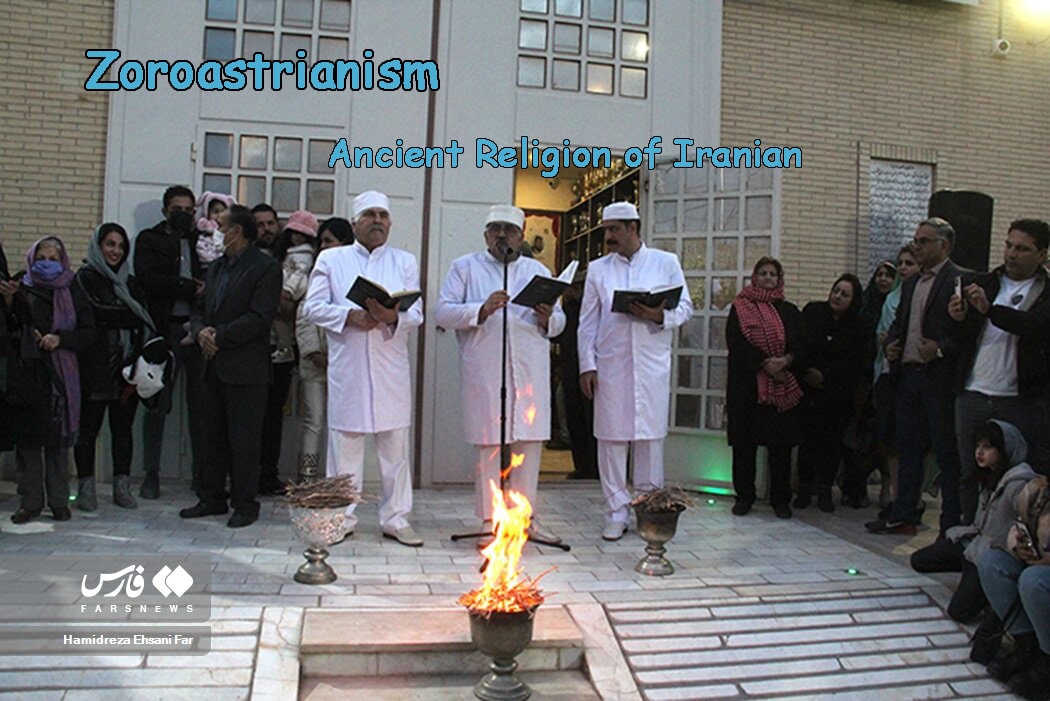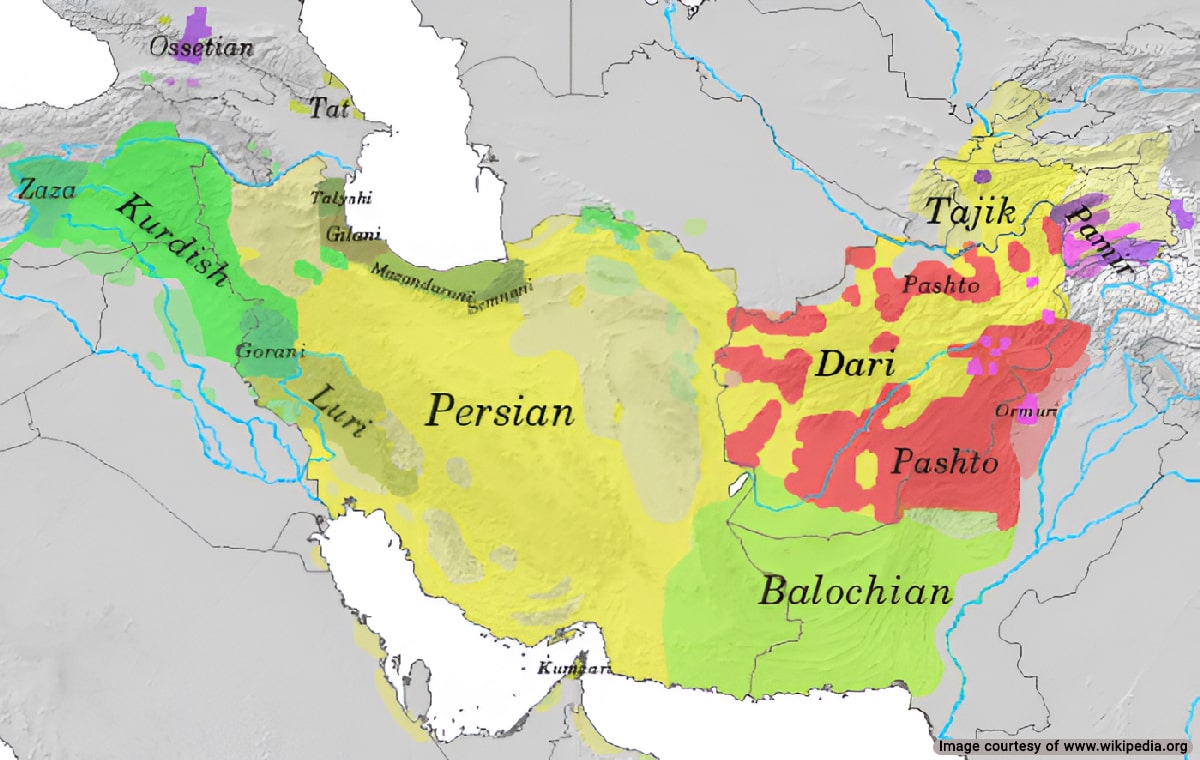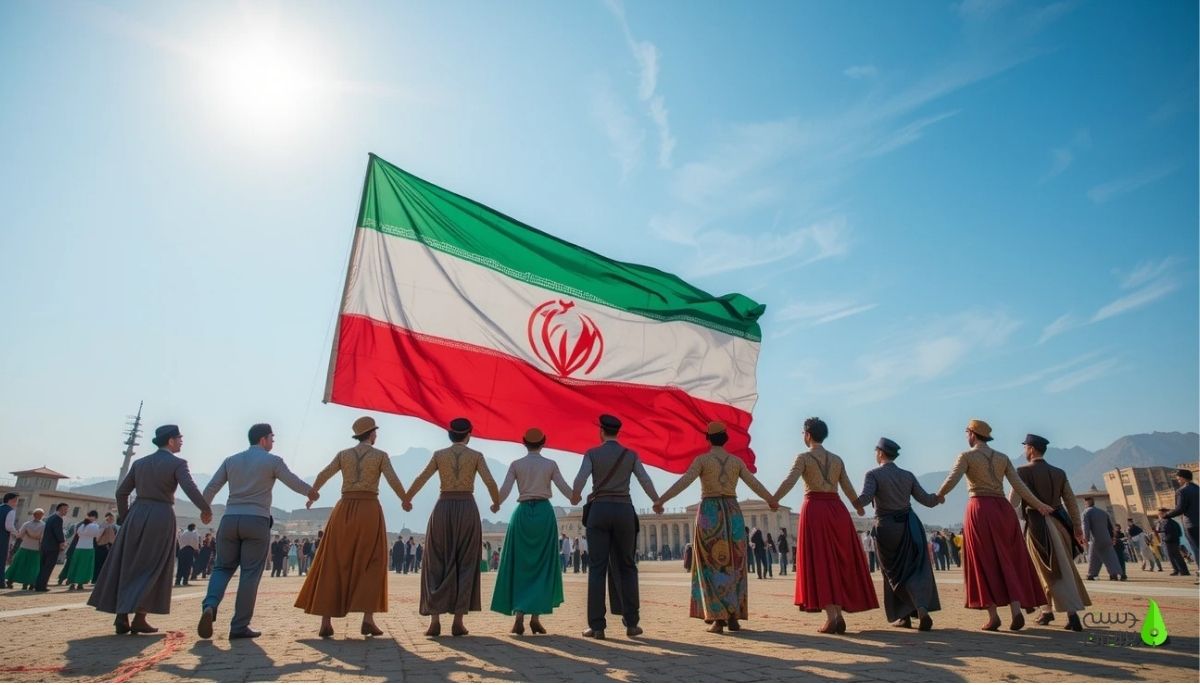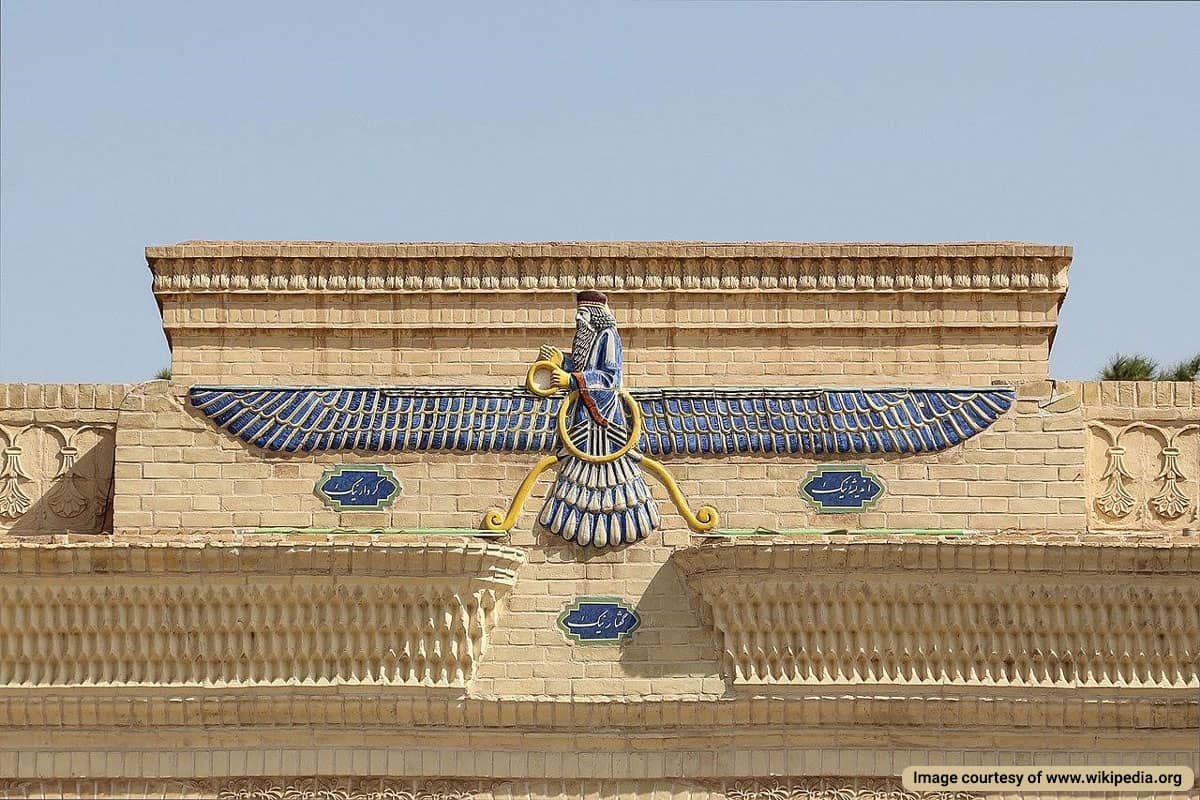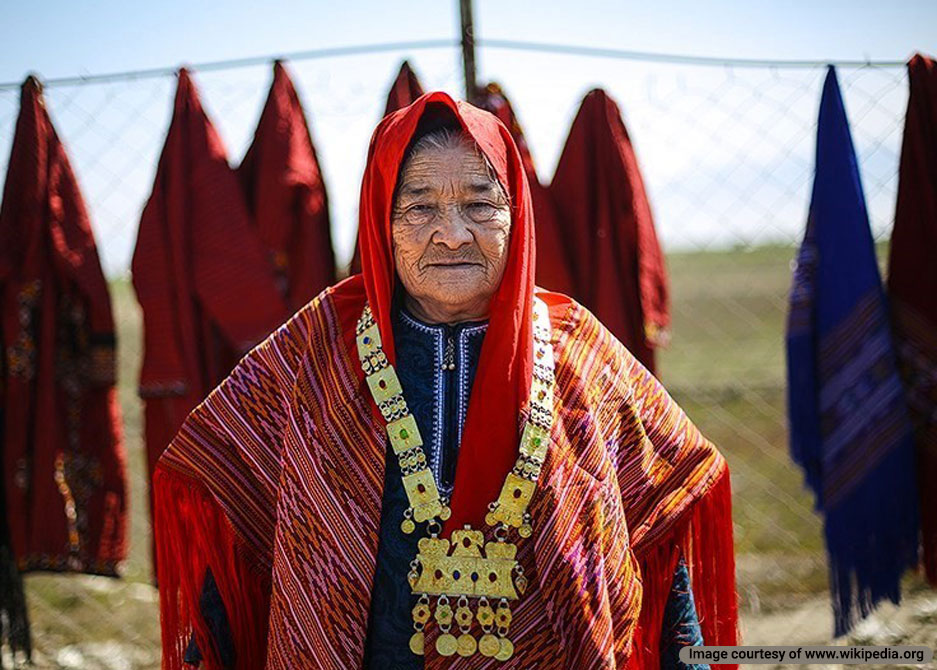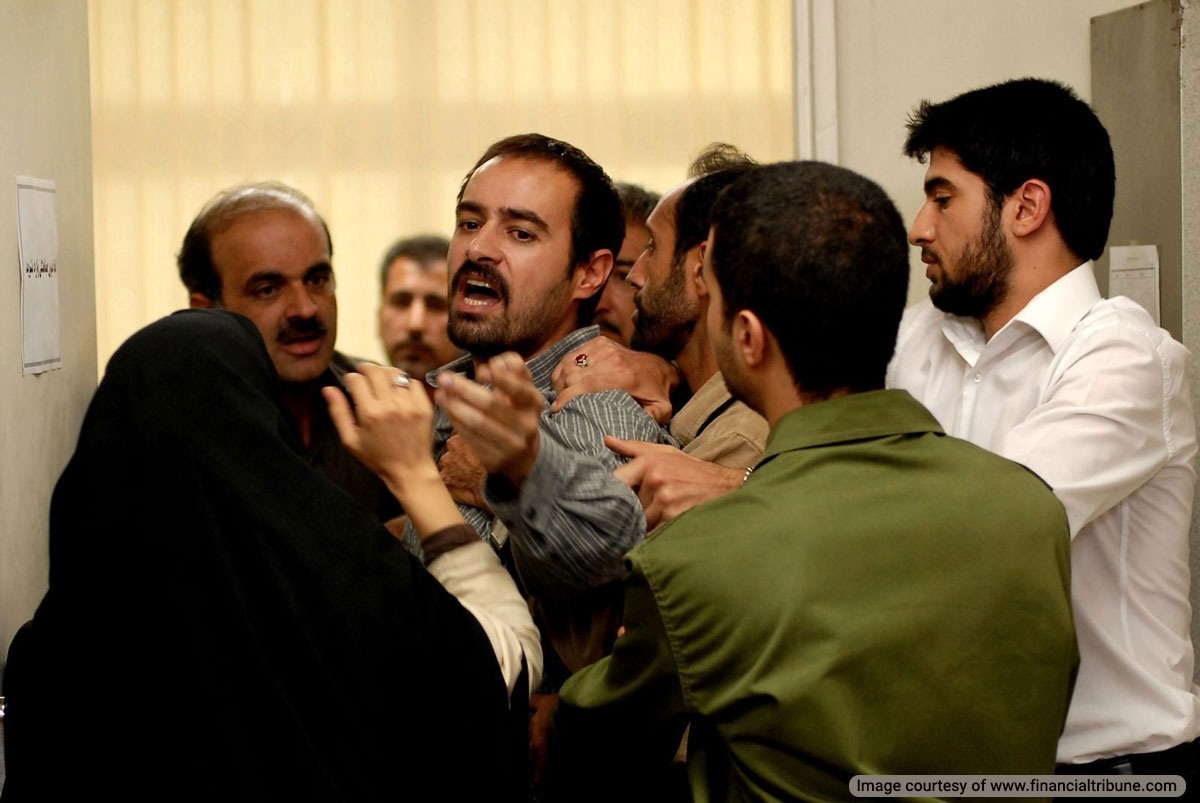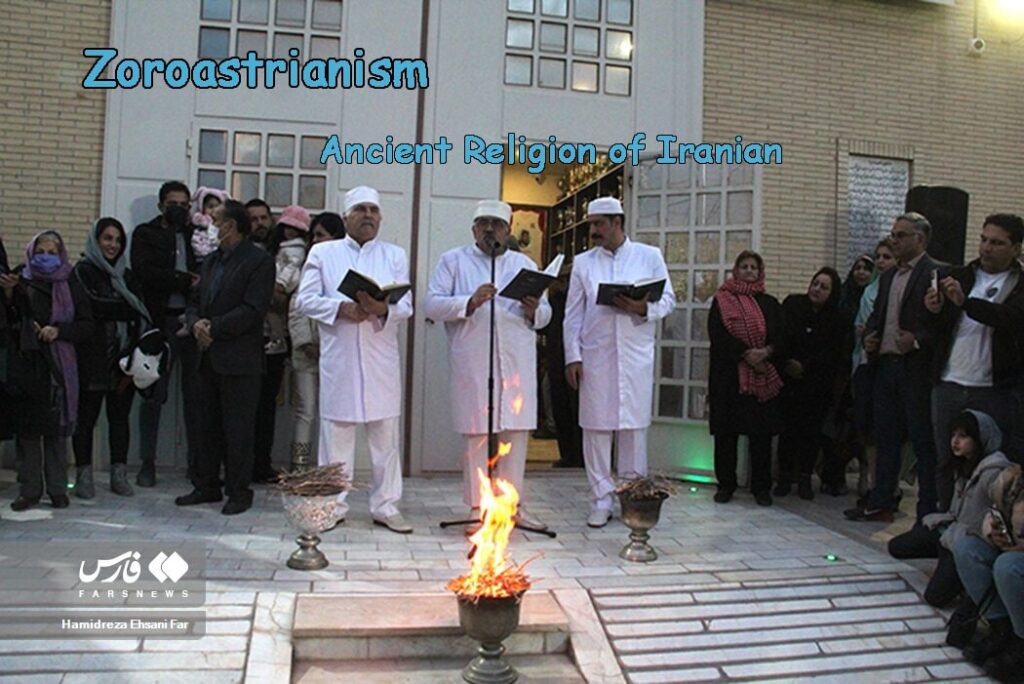
Zoroastrianism or Mazdayasna is one of the persian religions whose followers worship Ahura Mazda, the creator of all good. Sometimes known as “Behdin”, the Zoroastrian religion promotes a dualist doctrine. It attributes existence to the opposition of two forces of good (Ahuramazda) and evil (Angra Mainyu). In this eschatological perspective, the world ends when good overcomes evil and conquers the universe.
In other words, in Zoroastrianism, the world is the battlefield of right against wrong. The divine forces of Ahura Mazda “Amesha Spenta” face off against a group of Daeva. At the core of this confrontation, “Bahman” or “Hooman” meaning my good mind, is always fighting with “Ahreman” meaning my bad mind.
What are the Chinvat Bridge and Frashokereti?
In Zoroastrian belief, the agent of the distinction between good and evil is the deity of conscience and thought, “Daena”. Also, after death, the soul leaves the material world and enters the spiritual realm, where it is judged by Mithra based on its achievements.
When judging, a person’s good words, deeds and thoughts, the main concepts of Zoroastrian religion, are placed on the right pan of the scale of justice. Their evil words, deeds and thoughts are placed on the left pan.
If the good pan is heavier, a humanoid maiden named “Daena” will accompany the person to cross the Chinvat bridge and enter Paradise. If the evil deeds weigh more, this passage shrinks to be as narrow as the edge of a dagger, and a vile old woman pushes them to fall to the depths of darkness, the domain of the Angra Mainyu.
All souls, even those who have crossed the bridge and entered heaven, must wait until the time of “Frashokereti” (Day of Resurrection). Until then, the evil spirits still roam the cosmos.
Who was Zarathushtra?
Zoroaster (Zartusht) was an Iranian religious leader, reformer, poet, and philosopher who believed in the existence of two forces of good and evil. According to him, the world is made of these two forces. According to Zoroaster, man has the freedom to choose between good and evil. His teachings and thoughts formed the basis of “Mazdayasna” or “Zoroastrianism”.
What is the Origin of the Word Zoroaster?
In ancient documents, the name Zoroaster appears in different forms in Middle Persian, Parthian, Manichaean Middle Persian, and Sogdian. In contemporary Farsi, his name is pronounced and written as “Zartusht”, “Zardosht”, “Zarathusht”, etc.
The exact meaning of this word is unknown. Nevertheless, in Arabic and Syrian sources, the origin of Zoroaster’s name was considered to be “Zar” and “Vusht” meaning royal gold and golden kingdom. In Greek, it meant “star worshiper” and Europeans associated Zoroaster with the Assyrian goddess, Ishtar.
There is no consensus among linguists about the meaning of Zoroaster, most of them believe that the second part of his name “uštra” means “camel”. This belief supports a hypothesis that Zarathustra was a camel breeder or had a yellow camel, and the entire name “Zaraθuštra” means a person who managed camels.
The Life of Zoroaster
The collection of Zoroaster’s poems is considered a good source for learning about his life and work. These 17 hymns are known as The Gathas, but they do not account for all of Zoroaster’s life.
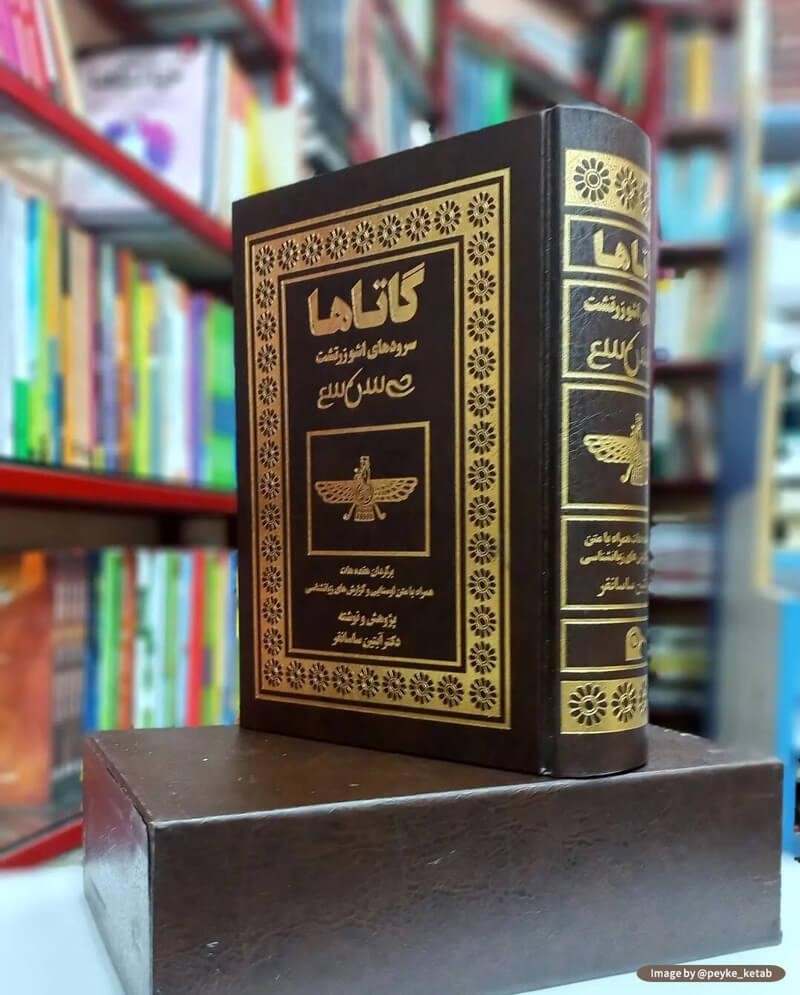
Another source is the later sections of the Avesta, which mentions the names of several members of Zoroaster’s family. Unfortunately, the important sections of this book focusing on the biography of Zoroaster have been lost.
Also, ancient Pahlavi texts and books such as “Denkard” and “Zadesparam Selections”, mention parts of Zoroaster’s biography in the Avesta. Although these sources are not devoid of fairy tales, they are an adaptation of the Avesta book.
The Emergence of Zarathustra
There is no clear definite answer to “When did Zoroaster live?”. Nevertheless, some researchers estimate he lived 1000 years BCE, 258 years before Alexander the Great, 5000 years before the reign of Xerxes, etc.
Some speculate his life was contemporary to the Achaemenid dynasty. According to these researchers, some of the characters in the Avesta book, such as “Vishtāspa”, are similar to Achaemenid Hystaspes (Guštāsp), the father of Darius I.
Others reject this hypothesis, citing the fact that the name of none of the Achaemenid kings appears in the Avesta. According to contemporary researchers, Zoroaster’s era is estimated around 700 years BCE.
Where Did Zarathustra Live?
There is a substantial conflict of opinion among archaeologists about the origin of Zoroaster. There is no mention of Zarathustra’s place of residence in the ancient Avesta texts.
Nevertheless, the events mentioned in Zoroaster’s books often take place in the east of Iran. In addition, the two Avestan dialects used in this book belong to the northeastern region of Iran according to linguists.
Some experts suggest he was from the Balkh or Samarkand region. Others speculate he was originally from the “Sistan” region and a group of researchers believe he was from the “Ray” tribes who later went to Azerbaijan and started his preaching there. Overall, it is estimated that Zoroaster lived in an area between present-day Afghanistan and Tajikistan.
What are the Gathas?
The Gathas, also known as “Gahan” and “Ghats”, are the poems of the Prophet of the Zoroastrian religion. These poems carry his teachings and messages and form the principles of the Mazdayasna religion.
Avesta, the Book of Zoroastrian Religion
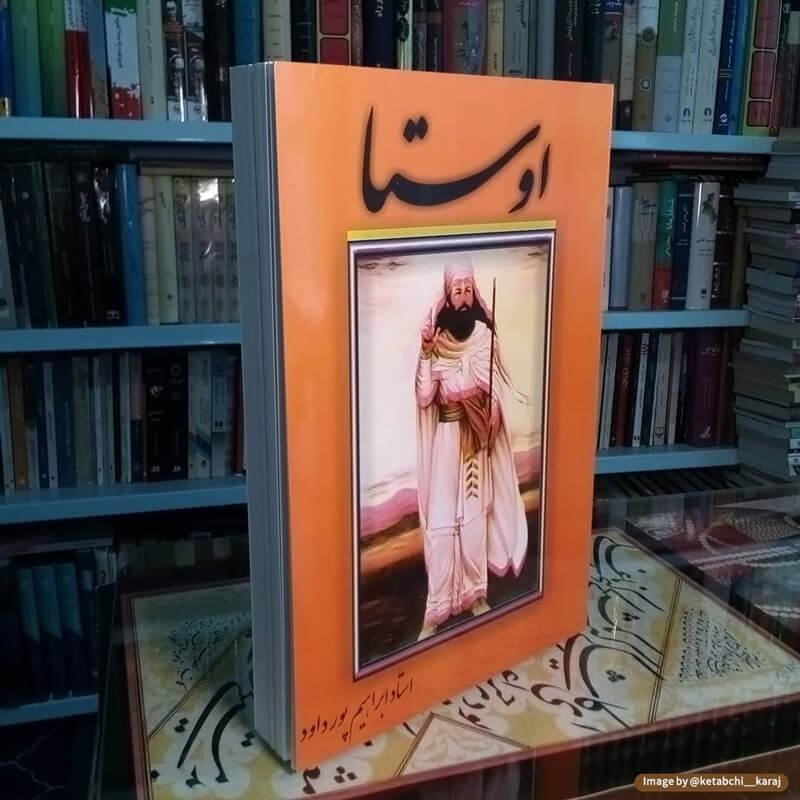
Avesta means praise, corresponding to upastava, the Sanskrit term. It is a collection of the oldest Zoroastrian writings and poems. A part of the Avesta is dedicated to Zoroaster’s poems.
According to historical evidence, different parts of Avesta were written in various periods by several people. Among them, Zoroaster’s poems are devoted to praising Ahura Mazda, Amesha Spenta, other deities, and natural elements, explaining human actions and characteristics of heaven and hell”.
Based on oral history and personal observations of historical events, Alexander first set fire to the royal palace. Then, he burned the old Avesta, which had 815 chapters. During the Parthian period, efforts were made to collect the Avesta from different cities in Iran, which led to the restoration of 348 chapters.
Today’s Avesta Collection includes five parts, which are:
- “Yasna” which includes the Gahan or Gathas. Yasna refers to a religious ceremony in the Zoroastrian religion.
- “Vendidad” means rules for confronting demons and evil forces.
- “Visperad” is a passage collection in the Avesta and the name of a ceremony.
- “Yasht” or “The Yashts” which means praise and prayer. Yashts are hymns to worship ancient gods such as “Mithra” (Mehr) and “Anahita” (goddess of water).
- “Khordeh Avesta” (Smaller or Lesser Avesta) is dedicated to the newer versions of this book and contains daily prayers, ritual hymns, and invocations.
Zoroastrianism Religious Principles
Zoroastrian religion is based on 9 principles, which are:
- Belief in one God, Ahura Mazda
- Belief in the prophethood of Zarathustra
- Belief in the spiritual world
- Belief in the good, order, and balance in the world
- Belief in the good nature of humanity
- Belief in Amesha Spenta (archangels and immortals)
- Belief in charity
- Belief in the sanctity of the four elements of water, wind, fire, and earth
- Belief in Frashokereti or the final renovation of the universe
The anticipation of the emergence of three saviors who are of Zoroastrian lineage is mentioned in Zoroastrianism. According to the teachings of Zoroaster, the world will witness three “three thousand years” periods. In this way, at the end of each of these eras, a savior from the lineage of Zoroaster will emerge, and when the last savior appears, the world will end.
Based on this Zoroastrian prophecy, sects such as Bábism and Baháʼí Faith introduced themselves as one of the saviors.
Zoroastrian Teachings
In Zoroastrianism, the world belongs to God, and asceticism and monasticism are considered a manner of sin. Also, since creation and furthering blessings are one of Ahura Mazda’s characteristics, believers should fulfill this responsibility through agriculture.
In this ancient Iranian religion, “celibacy”, “homosexuality” and “abortion” are considered sins because they limit the creation of goodness. Zoroastrian religion emphasizes “practical ethics”, considers work to be a necessity of life, and teaches that the evils of laziness and gluttony cause the spread of poverty.
Also, the sanctity of fire as one of the manifestations of the god of light (Mithra) is considered one of the core beliefs of this ancient ritual. Therefore, the ritual of honoring the sacred fire is held with a special ceremony in temples and around the fire. In addition, among Zoroastrians, the near-Nowruz ceremony of Chaharshanbesuri is very important.
Zoroastrian Rituals and Religious Celebrations
In the Zoroastrian religion, there have been many holidays, ceremonies, and celebrations, which we will mention below:
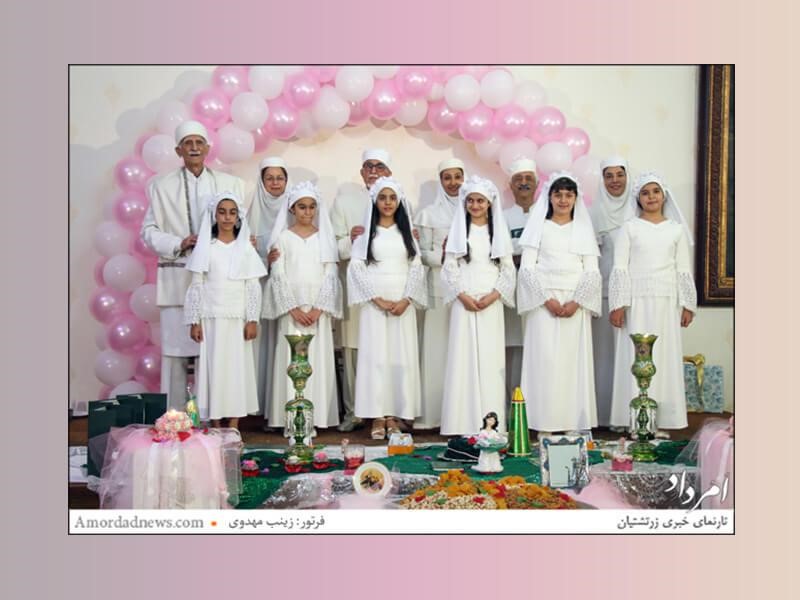
The rite of Sedre Pushi signifies rebirth or new birth. According to this custom, children aged 7 to 10 wear a loose white shirt with two bags, one in front and the other on the back. The Sedre and Kushti are considered the garments of the servant of Ahura Mazda. Also, it means that the follower of Zoroastrian is obliged to protect himself from bad traits. Kushti is the band tied around the waist of the Sedre.
Gahambars (Seasonal Festivals)
Gahambars include seven festivals that are held for God’s blessings during a year, and the most important of them is Nowruz.
Nowruz
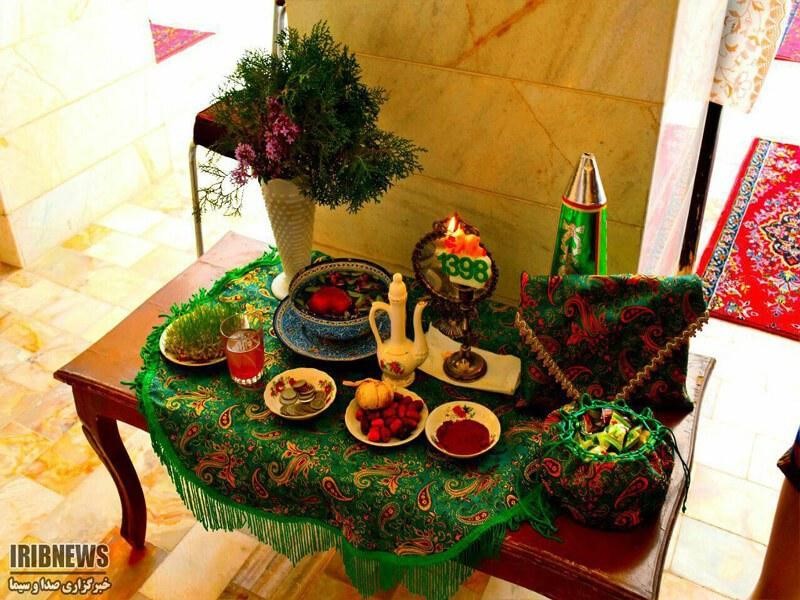
Nowruz is a six-day festival, and it is held during the spring equinox and coincides with Zoroaster’s birthday.
Farvardinegan
Farvardinegan is a special ceremony that is held on the 19th of Farvardin in honor of the correspondence of Farvardin month with the nineteenth day of each month, which is called “Farvardin”. In this celebration, Zoroastrians honor the souls of their departed by lighting incense and placing flowers on the graves.
Ordibeheshtgan
In Zoroastrian tradition, the third day of every month is called Ardibehesht. The correspondence of this day and month of the same name is known as the Ardibeheshtegan celebration.
Khordadgan
In this ancient religion, the sixth day of every month is called Khordad. For this reason, on the sixth day of Khordad, they celebrate a festival called Khordadgan. This celebration is held to honor water and prosperity along rivers, streams, and rivers.
Tirgan
In Zoroastrian tradition, the Tirgan festival is held on the 13th day of Tir in the hope of warding off drought.
Amordadgan
Amordadgan (Amertatgan) is held on the seventh day of Amerdad (Mordad). Ancient Iranians believed that Amertat was the guardian of plants and all growing life. He causes the growth of plants and the increase of the herd.
Shahrivargan
Shahrivargan, or “fire festival”, is one of the ancient rituals of Iran. Zoroastrians celebrate the fourth day of Shahrivar due to the correspondence between the name of the month and the fourth day of each month, which is called “Shahrivar”. It is worth noting that this festival was an ancient ritualistic festival and is not very common today.
Mehregan
The Mehrgan festival is very similar to the Nowruz festival. In the ancient Iranian calendar, the sixteenth day of the month was called “Mehr”. In honor of the correspondence of the name of the day and the month, on the sixteenth day of Mehr, a big celebration is held for the god of Mehr (Mithra).
Abangan celebration
In ancient Iran, the Abangan festival was held on the 10th of Aban the month, the same day of the month called Aban. Also, this month is dedicated to Anahita, the goddess of water.
Azargan
In Zoroastrian tradition, the Azargan festival is held on the ninth day of Azar for the same reason as the other celebrations: the ninth day of each month is called Azar. This festival, which is also called “Azarkhash” and “Azerjashen”, is held to honor fire.
Deygan
In Zoroastrianism, the 8th, 15th, and 23rd days of each month are called Dey. These days are celebrated in the month of Dey.
Bahmangan
Bahmangan is held on the second day of Bahman for the reason we explained above. In this celebration, there are special rituals such as cooking Ash, prohibition killing animals, collecting medicinal herbs, and cutting hair and trimming nails.
Sepandarmazgan (Espandgan)
Sepandarmazgan or Espangdan is one of the ancient festivals of Iran, which is held on the fifth day of Esfand, due to the correspondence of the name of the month and the day. In this celebration, women are honored. In ancient Iran, the Sepandarmazgan festival was also known as “Mardgiran” or “Mazhdgiran”.
Sadeh Celebration
The Sadeh celebration was held on the tenth day of Bahman or the hundredth day of winter, in the plains and deserts. It was celebrated by lighting a big bonfire to honor the creation of fire. According to Zoroastrian beliefs, fire is a manifestation of Ahura’s light and can destroy the remnants of the cold, which is a sign of the Angra Mainyu.
Esfandgan
This celebration is held on the 5th day of Esfand, to mark the significance of women and the earth in Zoroastrian culture.
Mazdayasna and Other Religions
According to some researchers, the Zoroastrian religion was influenced by some ancient religions of China, Armenia, Sogd, and the Kushan Empire. On the other hand, the demonology and eschatology in Mazdaism have influenced later Abrahamic religions. “Abrahamic religions” refers to the religions of Judaism, Christianity, and Islam, whose origin was Prophet Abraham.
Although Mazdayasna is based on dualism, it also includes elements of monotheism and polytheism. In the following, we discuss some of the effects of Mazdayasna on other religions:
Zoroastrianism and Indo-Iranian Beliefs
The Indo-Iranian origins of Mazdaism have created significant similarities to the Historical Vedic religion. Among the similarities of these two rituals, we can mention the following:
- Words like “Ahura” meaning god in Avestan and “Asura” meaning demon in the Sanskrit language have a common root. Also, “Daeva” meaning demon in Avesta is similar to “Deva” in Sanskrit.
- Symbols such as the sanctity of fire are in both rituals.
- There are three tiers of fires in Zoroastrianism for farmers, warriors, and priests and five Vedic fires for the earth, clouds, plants, animals, and humans.
- The existence of the holy drink “Haoma” in the Zoroastrian tradition and “Soma” in the Vedic religion.
Zoroastrianism and Manichaeism
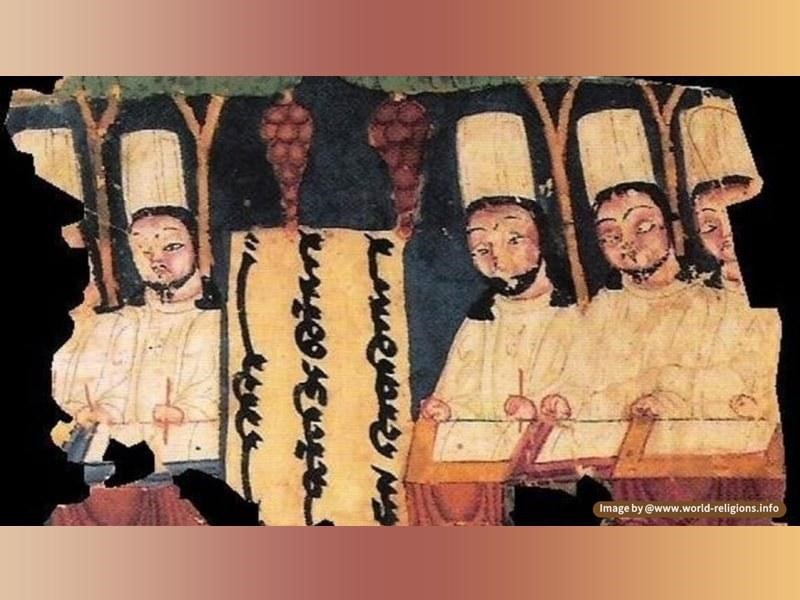
One of the most obvious connections between the two religions is the belief in dualism or the existence of good and evil. Gherardo Gnoli, the Italian expert in Iranian religions, expresses the relationship between Manichaeism and Zoroastrianism in this way:
“We can say that Manichaeism originated from the Iranian religious tradition and its relationship with Mazdayasna is like the relationship between Christianity and Judaism.”
It is worth mentioning that Manichaesim has significant differences with Zoroastrianism. In Manism, “evil” is equivalent to “matter” and “good” is equivalent to “psyche”. For this reason, it is similar to asceticism mysticism.
In Zoroastrianism, asceticism is rejected and the only duality is that of good and evil. Also, there is no difference between the material and spiritual world, but in Manichaeism, the material world is considered a creation of Satan.
According to Mani’s writings, which were obtained from the ruins of Manichaeism temples in China, the name of Zoroaster is repeated ten times in the form of “Zaroshch Burkhan”. This writing is in Uyghur, the language of the Uyghur region of Turkestan, in the western part of China.
Also, one of the Manichaeism hymns is dedicated to Zoroaster. In this hymn, which is in the Parthian or Arascid Pahlavi language, Zoroaster is described as a liberator and pious prophet.
Zoroastrianism and Yazidis
Yazidis are a minority of Kurds living in Iraq, Syria, and the Caucasus who speak the “Kurmanji” language. In the “Yazidi” or “Yazdani” religion, only pure Yazdan is praised. This religion is a combination of unorthodox Islam, Eastern Christianity, Judaism, and Zoroastrianism.
Zoroastrianism and Christianity
Names like Zarathustra and Vishtasab are well-known in Christian literature. Like the ancient Romans and Greeks, Christians consider Zoroaster to be an astrologer and a sorcerer. Clement of Alexandria, a Christian theologian, considers Zoroaster as the son of Armenius in Plato’s book. According to Clement, Zoroaster has traveled to the underworld and will return one day.
Zoroastrianism and Islam
In the Muslim holy book of Qur’an, there is no mention of Zoroaster and his ancient religion, but the term Majus is mentioned once in Surah Hajj. Since the Zoroastrians were also known by names such as “Majus”, “Gabar”, “Parsi” and “Zandiq”, this may refer to Zoroastrians.
At first, Muslims did not consider Zoroastrians among the followers of a holy religion, in other words, “people of the book”. On the other hand, belief in this religion had spread so much among Iranians and became a significant part of their culture and customs. For this reason, after the Arab invasion of Iran and due to the predominance of this religion, Muslims were forced to consider Zoroastrians among the followers of the People of the Book.
Mazdayasna in Other Cultures
Mazdaism has been a universal religion due to the promotion of this religion for a millennium and its ties with societies under the rule of Iran. Belief in the emergence of a savior, the existence of heaven and hell, freedom of will, and the existence of a day of reckoning after death are present in Zoroastrianism.
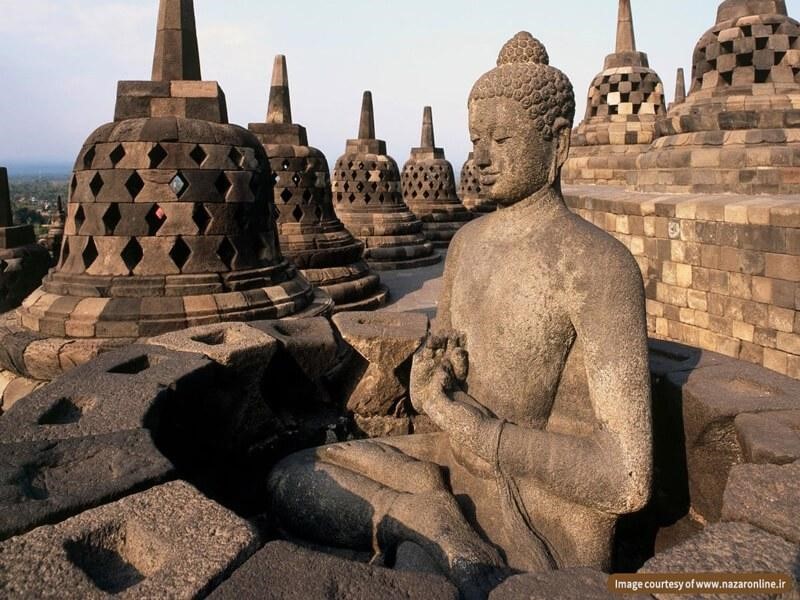
These beliefs have influenced the subsequent schools of philosophy and religions, including Greek philosophy, Bahaism, Gnosticism, Buddhism, Judaism, Christianity, and Islam. Now we will discuss the influence of the Mazdasena religion on some of these societies:
The Influence of Zoroastrianism on Iranian Culture
Since Zoroastrianism has been the dominant religion of the people of Iran for a thousand years, its effects are evident in Iranian culture and mythology. In the period of post-Islamic Iran, the teachings of Mazdayasna remained a part of Iranian cultural heritage among the ancient Iranians.
The Influence of Zoroastrianism on the West
After the Achaemenid king, Cyrus the Great, conquered the ancient city of Babylon, he freed the Jewish slaves in this city. The philanthropic action of Cyrus caused the teachings of the Mazdayasna, which was widespread among Iranians, to enter Jewish religious texts. These ideas later became part of the central concepts of Judaism.
In addition, following the victories of Iranian kings in modern Europe such as Greece, Zoroastrian ideas were introduced into Greek philosophy as well. Before the arrival of Zoroastrian teachings, the Greeks believed that man had limited will and that it was the gods who determined destiny. While Iranian philosophy, which was the result of ancient Indo-Iranian ideas, emphasized human freedom and agency.
These concepts were adopted by the Western culture. The influence of ancient Iranian culture and the institutionalized teachings of Zoroastrianism can be found in Western literature as well. For example, the book “Divine Comedy” by Italian poet Dante Alighieri illustrates the journey to heaven and hell.
After the Renaissance, in most parts of Europe, especially Western Europe, Zoroaster was considered a philosopher, sorcerer, and astronomer.
Zoroastrian Societies Across the World
Although Zoroastrianism is one of the official religions of Iran, the followers of this religion are not limited to this geographical region. The largest Zoroastrian communities are present in western India, central Iran, and southern Pakistan.
Of course, there are small immigrant groups of Iranian Zoroastrians in all parts of the world. In addition, South and Central Asia, Iraq, North America, and Sweden have Zoroastrian populations.
Learn More About Ancient Iranian Religions
Learning about Iranian religions can shed new light on the process of mankind’s intellectual evolution. An insight that is very effective in better understanding modern religious beliefs around the world.
For this reason, in addition to introducing Iran’s tangible cultural heritage, Destination Iran aims to address Iran’s intangible cultural heritage as well. Therefore, we invite you to learn about the ancient religions and cultures of Iran on your travels.






